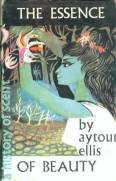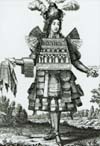|
Book
Reviews Essence of Beauty – a History of Perfume & Cosmetics By Aytour Ellis In
the acknowledgement Mr Ellis, who must have been in his 64th year on
publication of the book, cites Pouchers’ classic trilogy of volumes of
perfumery and cosmetics, and CJS Thompson’s “Mystery & Lore of Perfume”
as major contributive sources of material. Yet Ellis managed to produce a very
fresh-sounding and readable book covering the history of perfumes, and in the
last 6 chapters, an attempt to illustrate production, classification, a brief
review of raw materials and “A choice of perfume and the Art of make-up”.
Alas the passage of time and the drift to new points of reference in fashion,
cultural values and morality cameo the latter chapter in the outdated maiden
aunt class. The
main strength of the book is in its descriptive clarity, many quotations, and
the many interesting (twenty!) illustrations for the various civilisations
described. Many of these illustrations come from scattered world libraries, but
a few seemingly do not – for example a charming illustration of “The Boat of
Foolish Smells” from Badius “La Nef des Folles” 1502 follows on from a
description of Thomas Norton’s book “Ordinall of Alkimy” which is a guide
for alchemists on odours to guide them in their experiments! Civilisations
described are the kingdoms of Ancient Egypt and Judea, Assyria & Babylon,
India and the Far East, Greece and Rome, Early Britain, and Early perfumers in
France and Italy. The book goes on to describe Perfumes in Shakespeare’s time,
and at the Restoration. It is always interesting to find fascinating tit-bits: in the chapter covering The lure of Perfumes and Odours we have a brief account of the odours exhaled by redheads and their fascination for certain men as recorded by Fréré, a nineteenth Century physician. This for recalls Paul Jellinek’s observations on redheads in “The Psychological Basis of Perfumery” (Blackie Academic & Professional) – a book by the way, I have trouble taking seriously! However we go on to learn in the same chapter that Alexander the Great was “more loved by women than any other prince, because his sweat was more odiferous”; and later of Sir William Temple who experienced some Real Aromatherapy (see R.A. section on this site) in India House in Amsterdam, after beneficially inhaling mace, cloves and nutmegs in great open chests. From the chapter Bagnio and the first Perfumed Bath we read of strolling perfumers who toured the country in braided scarlet coats. When out to impress country folk they descended from their fine horses and in impressive attires were attended by fragrance wafting through the air whilst musicians played to create a suitable atmosphere. Ah …. I was born to late …. I’m sure I could have done that! Copyright © 2002 by Tony Burfield ALL RIGHTS RESERVED BACK NEXT BACK TO BOOK REVIEWS
|

